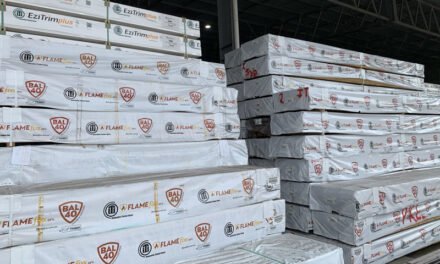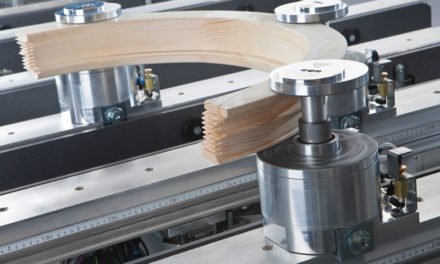A recent Senate Inquiry report and building failures have highlighted the importance of certifiers.
Coincidences can sometimes be remarkable. Three weeks after the Senate Economics References Committee released their report ‘Non-conforming building products: the need for a coherent and robust regulatory regime’, a mass evacuation due to cracks in Sydney’s Opal Tower on Christmas Eve dominated the headlines.
As this issue went to print, an interim report by three of NSW’s most senior independent engineers suggests the issues at Opal may be with design and construction, rather than materials, but the public gaze has been well and truly focused on ongoing problems with materials compliance and building certification in Australia.
Truth be told, it’s not the sexiest topic, and those trying to get out the messages in the Senate’s 100-page report might have spent a long time trying to be heard were it not for the Opal cracks, following on from the cladding fires at Grenfell Tower and Melbourne’s Lacrosse building – both of which used product that did not meet existing regulations.
As it turns out, Australian homebuyers will happily pay attention to tedious topics when their homes and safety are at risk, and so the report has found a broader audience than the industry associations and companies that have been pushing the issue.
How we got here
Australia’s building regulations are relatively new. After World War II it was decided there needed to be national standards, but it wasn’t until the early 1970s that the Australian Model Uniform Building Code was released, followed by the first edition of the Building Code of Australia in 1988.
These weren’t developed in a vacuum: pre-existing legislation existed in most states, though not always in one easy to use (or find) place.
In many ways Australia was lucky. The codes took advantage of the older and regularly updated Australian Standards and operated within a Public Works framework that saw highly trained and specialised certifiers employed in government and public positions, making it easy to have confidence in the system, which certified both buildings and building products.
Unlike many other countries, there were no catastrophic building collapses to force our legislation, though changes were introduced following widespread property loss in natural disasters including Cyclone Tracy and several of our worst bushfires.
On the upside, it was a reliable, comprehensive system. On the downside, it was somewhat cumbersome and expensive, and slow to adapt to new products, especially international products that had been developed under rigorous but different regulatory conditions and did not meet the particulars of the Australian Standards.
Since the 1990s, State and Territory governments have moved to fully or partially privatise building inspection and approval processes. Building products now have six avenues to verify they comply, ranging from government certifications, to certificates from approved bodies or persons, to a “report registered by a registered testing authority” or “other documentary evidence” (www.abcb.gov.au).
These changes have been made in a bid to lessen the regulatory burden on the building and building materials sectors and to improve the speed of change, while continuing to keep the end user safe and secure. They are designed to limit costs and improve efficiency without sacrificing accountability or effectiveness.
In theory.
Why compliance matters
In practice, things haven’t run as smoothly. The Engineered Wood Products Association of Australasia (EWPAA) made a submission to the Senate inquiry in which it listed multiple risks from non-conforming engineered wood products, ranging from the failure of formply during a concrete pour to the structural collapse of building components.
These weren’t just warnings: the EWPAA conducted 24,495 tests on certified plywood, LVL, particleboard and MDF (their other testing areas of solid timber and glulam were not included in this set), and 484 tests on non-certified imported products in the period January 2013 to August 2015, during which an astonishing 28% of imported panel products were found to not meet Australian Standards, compared to 1.5% non-compliance of certified product from Australia and New Zealand.
“A lot of non-complying product is imported,” says Clair Borg, EWPAA communication officer. “Even when it’s sold as certified, there is a different level of rigour in the certification. For a lot of imported product there’s just one certificate that you see and that’s it. There’s no transparency, no way of checking.
“In our certification scheme we do ongoing market maintenance and monthly sample testing and it’s a much more rigorous process that suppliers have to follow in order to gain certification. That’s something you don’t see in every country.”
So far, Australians have been lucky and non-compliance has not resulted in a tragedy similar to Grenfell, though the discovery of asbestos in imported building products may lead to fatalities in future. However, the Senate report recognises the unacceptable level of risk and the fact that the current legislation, which allows product to be imported directly by developers and builders, is not enough to maintain manufacturing quality standards.
What does the report say?
There are multiple recommendations in the final report (see the executive summary at this link for a more complete list and links to the full version.) They include calls to establish or investigate the feasibility of:
- A mandatory third-party certification scheme for high-risk building products and a national register for these products.
- Examining international approaches for testing of high-risk products prior to import and determine if they can be suitably adapted to benefit and enhance Australian requirements.
- Each jurisdiction establishing a building information database that provides a centralised source of building design and construction documentation so regulators are better placed to identify where non-compliant building products have been installed.
- A confidential reporting mechanism through which industry and other stakeholders can report non-conforming building products.
- A requirement that importers of high-risk goods, prior to the importation of the goods, conduct sampling and testing by a NATA accredited authority (or a NATA equivalent testing authority in another country.)
- A national licensing scheme, with requirements for continued professional development for all building practitioners.
- Making all Australian Standards freely available.
- A national database of conforming and non-conforming products.
- A penalties regime for non-compliance with the National Construction Code such as revocation of accreditation or a ban from tendering for Commonwealth funded construction work and substantial financial penalties.
- Mandatory recall insurance for high-risk building products.
- Closing loopholes and improving the capacity of prosecutors to obtain convictions against entities and individuals importing asbestos, including consideration of increasing the threshold required to use ‘mistake of fact’ as a legal defence.
Queensland’s Building and Construction Legislation (Non-conforming Building Products—Chain of Responsibility and Other Matters) Amendment Act 2017 was held up as a model, with the committee recommending other states and territories pass similar legislation.
What comes next?
It’s not uncommon for Senate reports to languish for years, but thanks to the strong public interest, this one has significant momentum. While little has been heard from either of the major parties, who have returned from the long summer break into an even longer election campaign, a number of major industry groups have expressed support for the recommendations. EWPAA is hoping that they move smoothly from recommendations to legislation in the same way as a similar inquiry in Queensland.
“We attended quite a few Queensland hearings and the association was invited to speak at them as well as at the Senate Inquiry,” says Borg. “We definitely see the importance of following the Queensland legislation’s model of increasing accountability in the supply chain. We’re hoping that the other states will follow the recommendations to look at that as a model and feature similar elements in their legislation, which will go a way to remedying the issue.”
At the moment, though, the association points out that importers have a vastly higher standard of proof to show imported product has not been illegally logged than to show it conforms to the standard. Even when a product allegedly carries certification, it is often divorced from any records, and so cannot be verified by the buyer or end user, meaning they have to take that purchase in good faith, and are sometimes left with substandard product.
Not that Australian-made product is always compliant. The entrance of private certifiers has created problems for building materials as well as buildings themselves. “It goes back to the rigours of the certification scheme,” Borg says. “If you’re going to have a good certification scheme, private or public, it needs to be administered by people with technical expertise in the products being certified, and that can be an issue when you’re looking at commercial certification.
“We wouldn’t try to certify steel product, for example, because that’s not our area of technical expertise. If people are certifying a really wide range of products there can be issues around a lack of technical expertise because your area of certification is so wide.”
The association has caveats for some of the report’s recommendations, including mandatory third-party certifications if they don’t come with certain requirements. “Mandatory third-party certification needs to be of a certain quality,” says Borg, “and there needs to be that sort of technical experience to back up the certification.
“The plumbing and electrical industries already have mandatory third-party certification, but they also have a lot of issues with fraudulent certifications. We think certifications need to be verified with the certifier as a separate stage, and that information needs to be easily accessible and identifiable.”
And the need for enforcement is paramount, with a number of good pieces of industry legislation let down by a lack of consequences for infringements. “Hopefully the regulators will be enforcing compliance,” Borg says. “That’s something that the Queensland legislation has done, increasing enforcement power to the regulators, and I think that really needs to be done on a national scale as well. There needs to be meaningful enforcement of compliance.”
We may have to wait until after the next election for any action on the federal front, but in the interim, builders and developers will be watching the PR fallout from Opal Tower with interest. A savvy operator would be well advised to focus on transparent compliance and certification before the various state governments wind through the Senate recommendations and take market advantage of a public keener than ever for genuine quality assurances.
For more, visit ewp.asn.au or download the full Senate Report (or summary) at www.aph.gov.au/Parliamentary_Business/Committees/Senate/Economics/Non-conforming45th/Report












